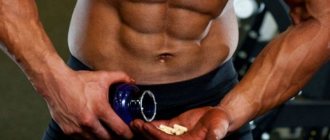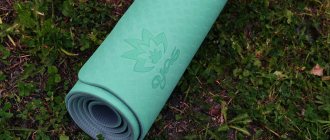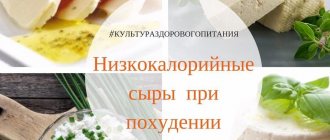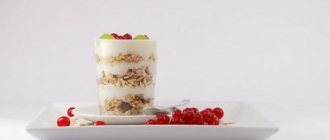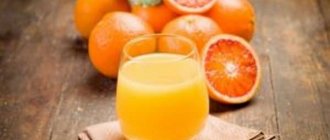Comparison of the best products
Based on the table below, conclusions can be drawn regarding the ingredient composition and other important characteristics of all participants in the rating.
| Model | Fat content, g | Calorie content, kcal | Weight, g | Compound | Price, rub |
| "Activia" | 2.4 | 57 | 290 | normalized milk, reconstituted milk from milk powder, yoghurt starter, bifidobacteria ActiRegularis; may contain traces of gluten | from 45 |
| "EPICA" | 2.9 | 65 | 290 | skim milk, cream, milk protein, yoghurt starter | 53-68 |
| "Valio" | 0.4 | 32 | 330 | skim milk, whole milk, milk protein, yogurt starter | 51-61 |
| "The Cheburashkin Brothers" | 0.5 | 35 | 330 | normalized pasteurized milk, starter | from 78 |
| "Ruzskoye Milk" | 2.5 | 51 | 330 | whole milk, skim milk, yogurt starter | from 93 |
Best lists
As you can see, not a single drinking yogurt contains sugar, milk powder, preservatives or vegetable fats. However, three out of five copies are worthy of special attention due to their other advantages over competitors:
"EPICA" - a lot of protein
Epika yogurt stands out among others due to its high content of milk protein - one bottle contains 10% of the daily requirement. This is not to mention the natural composition and good organoleptic properties. As consumers note, the taste is similar to Greek yogurt and kefir at the same time. The fermented milk product gives you a feeling of fullness for a long time and has a beneficial effect on the gastrointestinal tract. One of the best healthy snack options for both athletes and ordinary office workers.
"Valio" - the lowest calorie
Those losing weight should pay attention to drinking “Valio” without filler. The product is low-fat and has a low calorie content - only 32 kcal per 100 g. As befits natural “live” yogurt, it contains lactic acid microorganisms, the concentration of which is maintained within the expiration date. Not everyone likes the typical sourness in natural yoghurts - here it is minimal, the taste of the product is quite neutral.
"Activia" - price-quality ratio
Perhaps the most popular drinking yogurt on the market with a simple and understandable composition and excellent organoleptic characteristics. In terms of price-quality ratio, this fermented milk drink is the leader today; the price per bottle starts from 45 rubles. All other participants in the rating are more expensive, and some of them are even twice as expensive. “Activia” is a real classic with almost standard taste and consistency for “pure” yogurt, which is available in any grocery store.
Range
The entire range of yoghurts can be divided into two main types:
Drinking;
Thick.
Drinking yogurt has the consistency of kefir. The line includes natural, i.e. does not contain any flavoring additives, and with additives, including high protein.
The line of thick yogurt includes:
Natural yogurt (without additives);
Thermostatic;
Flavored (with fruits and berries);
With cereals and seeds.
Cottage cheese containing probiotic cultures should be placed in a separate category. Delicate with a creamy texture.
How to make natural yogurt at home
You can make this useful product yourself, so you can be sure of its naturalness. To prepare it, it is not at all necessary to have a special yogurt maker at home.
- First of all, we need a thermophilic starter, which can be purchased in the store.
- It is necessary to boil pasteurized milk with a fat content of at least 2.5% and cool to a temperature of about 40 ºС.
- The starter must be poured into a small amount of milk and stirred until smooth.
- Now you should pour the milk into a thermos or multicooker for further fermentation, cover with a lid and wrap in a woolen cloth.
- Fermentation usually lasts from 5 to 8 hours. Please note that the longer the cooking process, the more sour the yogurt will be due to the release of large amounts of lactic acid. Use your own preferences and reduce the time if necessary.
- Before use, the finished yogurt must be poured into portioned jars and cooled for 2-3 hours.
What to look for when choosing drinking yogurt
When choosing natural yogurt without filler, we are interested not only in taste properties, but also in composition. On the shelves you can see a fairly wide range, but it can be too difficult to understand this variety. The following recommendations will help you avoid mistakes when purchasing this popular fermented milk product:
- Natural yogurt without additives should contain only two active ingredients - milk and culture.
- The name of high-quality and healthy yogurt should not contain extraneous inscriptions or additions, directly except the word “yogurt” (prefix “bio”, yogurt product, etc.).
- A product has the right to be called yogurt if the label indicates the number of microorganisms it contains at the end of the shelf life. This value should be at least 1×10⁷ CFU/g (CFU - colony forming units). This information guarantees the preservation of beneficial microflora while the product is usable.
- When choosing yogurt, you must carefully check the integrity of the packaging - there should be no damage or defects. Depressurization of the container threatens serious health consequences when consuming a spoiled drink. The information on the label should be easy to read.
- The shelf life of the product should not exceed more than 30-35 days. Otherwise, the manufacturer most likely added preservatives that should not be there.
- Starch and stabilizers in yogurt will not ruin your health, but it is worth remembering why they are put there. These additives help achieve a thick consistency, but they also reduce the cost of the production process and negatively affect the quality of the finished product. At the same time, the price for such yogurt is unlikely to be lower than for its “pure” analogue of two ingredients - milk and sourdough.
Blogger investigation, or what is added to Activia from Danone?
Besides airplanes, photography and cinema, I have another passion. These are factories. I really enjoy watching the production process and learning how pieces of fabric are turned into clothes, leather into shoes, and fruit into juice. Airbus and Embraer aviation concerns the Guinness beer factory, the Piko juice and beverage production line, and several porcelain and jewelry factories. This time I had a very interesting opportunity to visit the plant of a world famous woman, who invited me to go to the production line and make a photo report .
Danone’s own plant was built and put into operation in 2010 in the Almaty region in the village of Bayserke. 17 million euros were invested in the construction, and the annual capacity is 14 thousand tons of fermented milk products per year. More than 65 types of products are produced here under the brands “Activia”, “Rastishka”, “Prostokvashino”, “Bio-Balance” and others. The plant employs 65 people in three shifts, supervising fully automated production. Every day, more than 127 thousand bottles of finished products reach store shelves in Kazakhstan, Kyrgyzstan and Uzbekistan.
Such information can be found on the official website, but there are many rumors surrounding the company and its products. The global concern is accused of selling consumers unnatural products that contain harmful substances and do not bring any benefit to the body. I, as a mother and wife, wanted to know whether Danone products are harmful or beneficial to my health and the health of my family? To do this, before going to the plant, I outlined several tasks for myself.
First, the World Health Organization (WHO) recommends limiting your daily sugar intake to 5% of your calories, which is about 6 teaspoons of sugar (30 grams). How much sugar is in Danone fermented milk products?
Secondly, why is milk powder used in production? Everyone knows that it is not as healthy as whole food.
Thirdly, can bifidobacteria remain alive for a whole month, and this is exactly what the expiration date of many Danone products is?
Fourthly, what harmful additives do Danone products contain?
And fifthly, can nursing mothers use Danone? Will the child be allergic?
Armed with a camera and a voice recorder, I went to the production of yogurt and kefir. Arriving at the place, I did not see any secret laboratories, warehouses with chemical waste or storage of harmful preservatives with skeletons on the packages. The Danone plant turned out to be a very compact, neat structure; the inside is clean and completely sterile. We were met by medical marketing specialist Zhanetta Eremeeva.
Before entering the workshop, she asked us to put on shoe covers, a cap and a robe and thoroughly treat our hands with antiseptic. After that, we got to the production line of the fermented milk drink Activia.
So, what is needed first of all for the production of fermented milk products? Of course, milk. Contrary to rumors, natural milk is used for the production of Activia, which is brought here daily on special trucks from 12 farms in the Almaty region.
Before receiving milk, specialists take a portion for testing, which is taken to a special laboratory.
Here the milk is checked to ensure it meets quality standards and is free of antibiotics. There is a strict rule “do not take milk from sick cows and maintain quarantine, during which the drugs used to treat the animal must be completely removed from the body.” If antibiotics or other harmful substances are found in the sample, the milk is rejected. The fact is that antibiotics kill beneficial bacteria and can harm the human body, so such milk is not suitable for production.
The examination confirmed that the milk does not contain harmful substances and can be used to make yogurt and kefir products.
Receivers pour milk through pipes into sterile containers, while the temperature and tightness of the milk receiving and storage process are carefully controlled. To prevent milk from spoiling, cold is necessary.
After this, the milk also enters the production workshop through pipes, where it is separated into cream and skim milk in special tanks, pasteurized at a temperature of 95 degrees and the preparation of the desired product begins in accordance with the recipe.
The process is carefully monitored by a technologist who enters the necessary data into the computer, and then the smart machine does the rest of the work. Indicators for the production of Activia Classic are now being introduced. The plant produces three types of this drink: vanilla, strawberry and peach.
Flavoring fillers are stored in a warehouse at a certain temperature and are divided into liquid and fillers with pieces of fruit or berries.
Pasteurized and powdered milk, sugar, fillers and starter are mixed in special tanks.
In “Activia Classic” for starter culture, Bulgarian bacillus, thermophilic streptococcus and bifidobacteria ActiRegularis are added, the exact composition of which is a trade secret of the company. According to Zhanetta Eremeeva, these beneficial bacteria improve digestion and restore the natural intestinal microflora.
After this, the process of fermentation begins for 7-12 hours and transforms the milk into a healthy, fermented milk product.
While this process is going on, bottles are being blown in another workshop. Each bottle is neutralized with hydrogen peroxide before filling with the product.
The finished product is cooled and bottled, with a cap and packaging placed on top.
After this, an expiration date and a stamp are set. Specialists are constantly on duty on the line, checking that the packaging is properly installed and the product is sealed.
The fact is that a “live” product is afraid of oxygen getting inside, as this can lead to mold, which develops well in a fermented milk environment, so it is necessary to ensure that there are no microcracks on bottles and caps.
Activia is ready to hit store shelves, but before that it will be packaged and taken to a warehouse.
But that's not all. The finished product is taken back to the laboratory and tested for health safety and the absence of intestinal infections. For this purpose, it is kept at temperatures of 25 and 30 degrees Celsius. While the laboratory assistants are working, Activia is in quarantine.
This batch is produced in accordance with technology and is safe for health. Now it can be distributed to retail outlets.
Our excursion ended and I turned to Zhanetta Eremeeva with a request to comment on my questions:
— Jeanette, how much sugar is in Activia?
— 100 grams of Activia contain 7.1 grams of sugar. And at 290 gr. product about 20.6 g. Sahara. Glucose is necessary for the body to transport oxygen to cells, so we cannot talk about its complete harm. Of course, you don't need to consume too much sugar. (Author’s note: for comparison, one ice cream cone contains about 40 grams of sugar, a chocolate bar contains 50 grams, caramel coffee drinks contain about 60 grams, and carbonated drinks contain more than 70 grams. Maybe it’s better to limit yourself to soda and chocolate?) .
— Is milk powder healthy?
— Powdered milk is used to enrich the beneficial properties of the product and give it the necessary viscosity. It is made from whole milk by evaporating the water. At the same time, all valuable substances remain in the milk.
— How do you ensure that the product remains “alive” for a month?
- Thanks to modern technologies. The cold and completely closed type of production, which prevents oxygen from entering the product, helps to preserve it in a “live” form. We guarantee it.
— What harmful additives are contained in Activia?
— Our company’s mission is to produce healthy products, so we do not add preservatives, stabilizers or artificial colors. Activia is a completely natural product that does not contain harmful additives.
— How are fruit fillings made?
— By pasteurization and evaporation of water. This is to make the fruit safe as it may contain germs. These are absolutely natural fruits and berries.
— Can the product be used by pregnant and nursing mothers?
- Without a doubt. Activia contains split protein, which is more easily absorbed by the body. In addition, it helps normalize digestion.
And finally, how to choose baby yogurt? A product intended for children must not contain:
— GMO;
— Flavor enhancers;
— Artificial or natural-identical colors and flavors;
— Milk fat substitutes (palm oil).
And, of course, watch how much sugar your child consumes per day!






